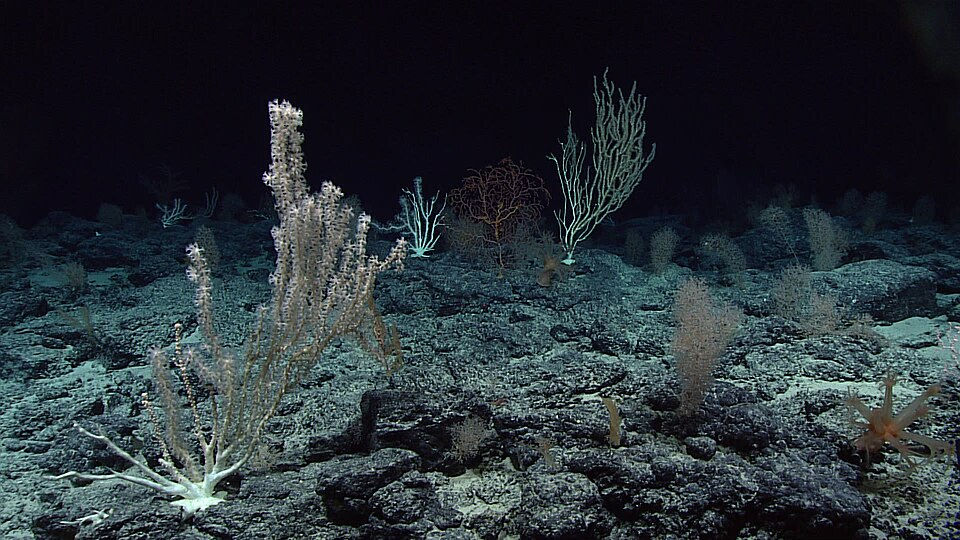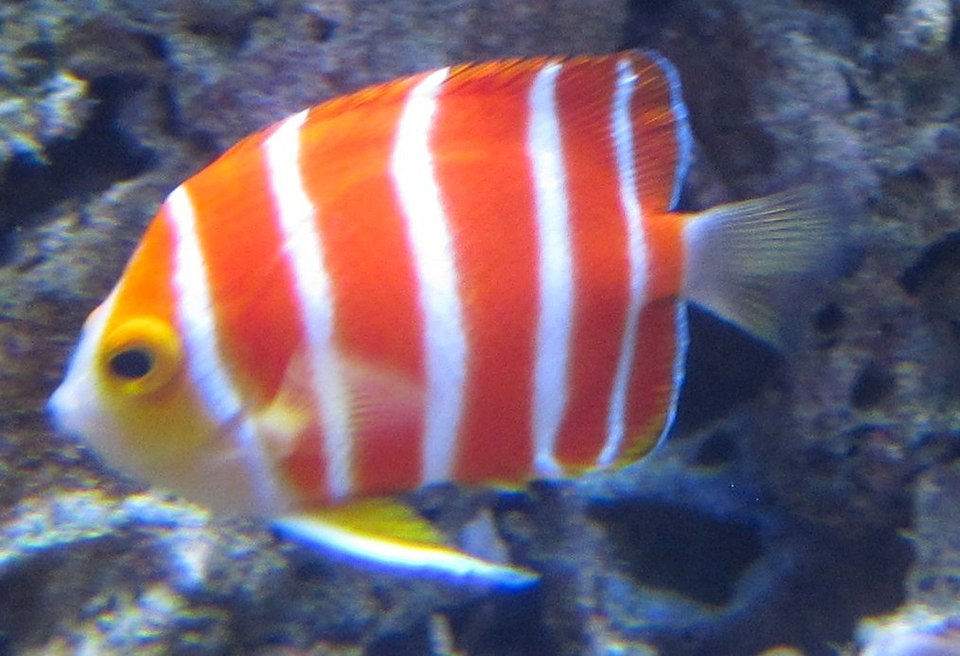Beneath the Surface: How Coral Guardians and Divers Unite for Coral Restoration
- Plunge Waterwear
- Aug 2, 2025
- 5 min read
Imagine easing off the boat’s ladder, salt on your skin and sun on your back, then going under the glassy surface. As the world above slips away, kaleidoscopic corals come into focus: swaying fans of purple sea whip, gardens of staghorn reaching for the light, and schools of tiny sergeant majors patrolling their turf.
Each gentle kick carries you deeper into a living tapestry of color and motion.
But... today’s ocean explorers aren’t just thrill-seekers—they’re guardians of these fragile ecosystems. Armed with training, passion, and gear that cares for both diver and reef, they’re redefining what it means to dive.
In this week’s article, we’ll dive into the latest breakthroughs in coral reef conservation expeditions, celebrate the collaboration between divers and scientists, and meet a candy-striped fish that reminds us how much remains hidden beneath the waves—while showing why your choice of a Plunge Waterwear UPF 50+ dive suit makes every mission safer, more comfortable, and irreversibly impactful.
Breathing New Life into the Florida Keys
This July, the Florida Keys saw the launch of NOAA’s most ambitious coral nursery network for coral restoration to date—an interlinked system of floating nurseries at seven famed reef sites from Key Largo down to Marathon. Here’s how it works:

Fragment Collection: Divers carefully harvest small, healthy fragments of Elkhorn and Staghorn corals from donor colonies.
Nursery Cultivation: Attached to buoys suspended 5–10 m below the surface, these fragments grow in nutrient-rich waters, sheltered from storms and predation.
Outplanting Missions: Once they reach 15–20 cm in size—typically 6–12 months later—volunteer divers return to transplant them onto dying reef structures.
These expeditions are more than a photo op; they’re carefully choreographed scientific operations:
Genetic Resilience: By sourcing fragments from dozens of parent corals, researchers boost genetic diversity in the nurseries, improving offspring resistance to heat stress and disease.
Community Champions: Anyone with entry-level scuba certification can sign up. Over 300 volunteers participated in last month’s inaugural outplanting week, earning a front-row seat to ecological restoration.
Data-Driven Refinement: Each new coral is tagged with a tiny code. Follow-up surveys track survival rates, growth speed, and bleaching events—data that fine-tunes propagation methods for maximum impact.
When you book a coral conservation expedition in the Keys, you’re not just “planting coral”—you’re joining a global movement to reverse decades of reef decline. Hours underwater, often under the tropical sun, demand gear that works as hard as you do.
Total UV Defense: Blocks 98–99% of harmful rays during surface swims and boat transfers.
Full-Body Shield: Guards against scrapes from sharp coral edges and stinging organisms.
Second-Skin Fit: Engineered stretch fabric moves with you—no bunching, no drag.
Ready to make waves? Explore our complete lineup of women’s UPF 50+ dive suits at www.plungegear.com/shop.
Technical Triumphs in the Twilight Zone
While shallow-water nurseries thrive, some of the ocean’s most resilient corals dwell far below conventional scuba limits. In Hawai‘i and beyond, scientists have turned to technical diving—using mixed-gas blends and closed-circuit rebreathers—to explore mesophotic reefs 30–150 m beneath the surface. These “twilight zones” are bathed in dim light yet teem with life uniquely adapted to low-light conditions.

Key milestones in twilight-zone exploration:
ROV Reconnaissance: Remotely operated vehicles first revealed dense carpets of deep-water coral in the Northwestern Hawaiian Islands.
Trimix Pioneers: University of Hawai‘i researchers set depth records for coral surveys at 120 m, documenting new species and unexpected spawning events.
Rebreather Advances: Closed-circuit systems allow longer bottom times and cooler gas mixes, reducing nitrogen narcosis risks essential for accurate data collection.
These deep expeditions have uncovered startling facts: some mesophotic corals exhibit heat-tolerant genetics similar to their shallow relatives, suggesting they could repopulate bleached reefs in warmer oceans. However, technical training and specialized gear are non-negotiable for safety.
Even if you’re not diving 100 m down, understanding the full vertical range of reefs enriches every dive. And from sunlit shallows to deep-water excursions, Plunge Waterwear’s dive skins support your journey:
Thermal Balance: Lightweight insulation keeps you comfortable on shallow dive days, and act as a great base layer under your neoprene wetsuit during chilly deep-water safety stops -- they even make your wetsuit easier to put on and take off!
Rapid Drying: Quick-wick materials dry quickly after surfacing—ideal when switching between dives or logging data at the surface.
Eco-Conscious Design: Our suits use repeat fabric designs -- meaning we have MINIMAL waste compared to others that use placement patterns. Also, by using UPF 50+ fabrics, there's no need for sunscreens that can be harmful to the reef.
Whether you aspire to technical certification or simply wish to appreciate the ocean’s vertical wonders, your dive suit should be a trusted ally. Browse our UPF 50+ dive skins at www.plungegear.com/shop.
“What the Fish?” Spotlight: The Peppermint Angelfish
When a rare Peppermint Angelfish popped up on a citizen scientist’s submersible camera last week, the marine biology community buzzed with excitement. This candy-striped beauty, first described in the 1970s, is so elusive that only a handful of confirmed sightings exist.

Habitat: Prefers steep walls and overhangs between 30 and 70 m, hidden among gorgonian corals.
Behavior: Skittish by nature, it darts into narrow crevices when approached.
Conservation Status: Not evaluated by the IUCN, but limited range and collection pressures suggest vulnerability.
Spotting a peppermint angelfish isn’t just a brag—it’s proof that healthy, deep-water refugia still harbor wonders. And each report—logged via platforms like iNaturalist—helps guide future protection measures. Next time you venture into the blue, remember that every coral you outplant and every rare fish you document enriches our collective knowledge.
Your Next Steps in Ocean Stewardship
Book a Reef Restoration Expedition:
Seek out programs in the Florida Keys, Curaçao, or your local marine protected area.
Pursue Technical Diving Courses:
If you’re drawn to mesophotic reefs, enroll in mixed-gas and rebreather training at a certified facility.
Contribute to Citizen Science:
Upload unusual sightings—like peppermint angelfish—to Reef Life Survey or iNaturalist.
Suit Up Responsibly:
Choose a Plunge Waterwear UPF 50+ dive suit for protection, flexibility, and minimal environmental footprint.
Final Reflection: Every Plunge Counts
From nurturing newborn corals in sunlit nurseries to uncovering hidden reefs in the twilight zone, these coral conservation expeditions remind us that exploration and stewardship go hand in hand. With each dive—no matter the depth—you write a new chapter in the ocean’s story.
Ready to dive deeper? Explore the full collection of UPF 50+ dive suits at www.plungegear.com/shop.
Dive on, saltwater souls + fearless hearts. Until next week.





Comments